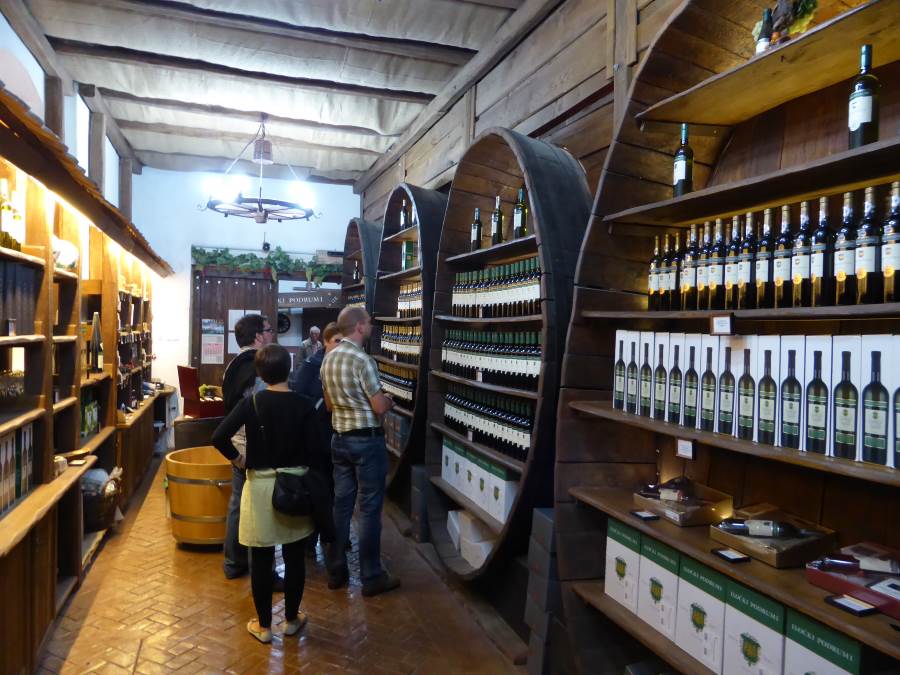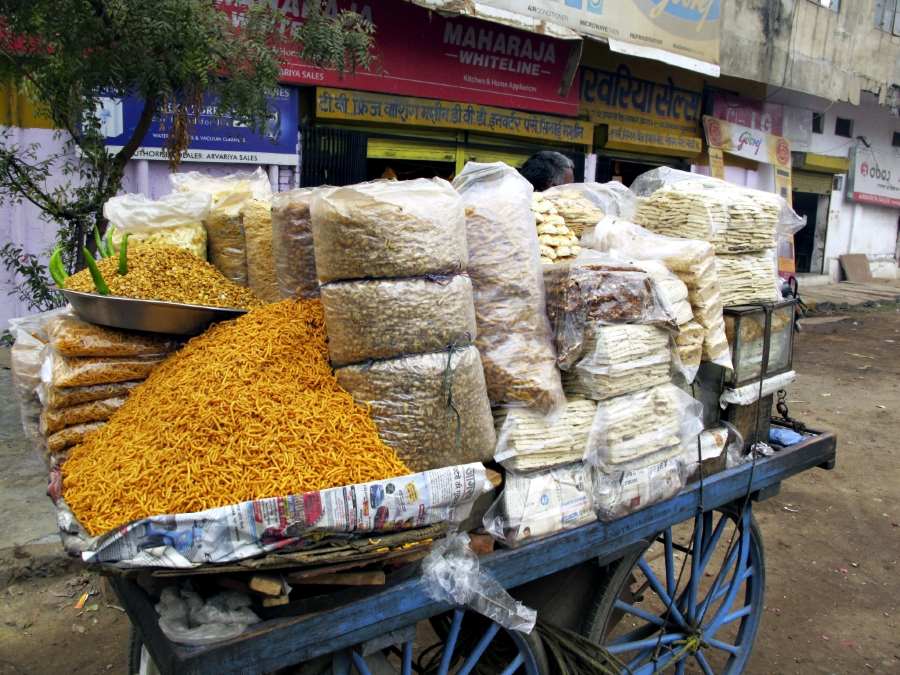According to a market report by UNWTO – UN World Tourism Organization, food tourism is a growing trend around the world. Gastronomy has become an essential part of any tourism experience and is a valuable mechanism to benefit rural communities, creating additional income for locals, strengthening the agriculture and cultural identity. To try out local dishes is always a very enriching experience for the tourist, considering that people tend to connect over a meal and that food is always an expression of the traditions of a host country. Simply put, food tourism is a win-win situation for all involved.
Food Trends: Food Tourism in Vietnam
In an industry in which experiences play such a fundamental role, food tourism is a wonderful way of getting in touch with the local culture and sensing and tasting the abundance and uniqueness of a destination. The UNWTO report points out that the Mediterranean diet of Spain, Greece, Italy and Morocco has been included in UNESCO’s list of Intangible Cultural Heritage of Humanity in November 2010. Possibly there is no better way to underline the importance of the relationship between culture and gastronomy and its importance for tourism.
As a matter of fact, sometimes food can define whole countries (just give some thought to the idea that iconic foods such as pizza and spaghetti are offered throughout the world and are probably even enjoyed by more people outside of Italy than in the country itself) and many countries are known first and foremost for their cuisine. Food is also an expression of a lifestyle – a case in point is the slow food movement that is strengthening throughout the world and emphasizes regional cuisine, environmental sustainability, healthy eating based on varied and nutritious ingredients and the enjoyment of delicious food. As people become more aware of what they eat, they also would like to enjoy more consciously during their vacations; therefore food tourism is part of a broader wellness and sustainability trend.

Destinations around the world are seeking to differentiate themselves through their national cuisines. In South America, Peru has a longstanding history of promoting its gastronomy influenced by the wealth of marine life in its Pacific waters, as well as the ever-present potato that is said to have more than 3000 varieties; the yearly Mistura food festival in Lima is now considered to be the largest culinary festival in South America; while other destinations such as Colombia are tapping into the trend by promoting the gastronomic abundance that the geographic and natural diversity has bestowed upon the county, including coffee-themed stays on haciendas that allow visitors to partake in the authentic rural life.
In Africa, Egypt promotes visits to local markets such as the Khan El-Khalili bazaar in Cairo, as well as tourism during Ramadan which creates a unique atmosphere to enjoy food during the holy month in Egypt. In Morocco, a country at the crossroads of various civilizations, the multifaceted cuisine reflects a blend of many influences and is characterized by spices, dried fruit and nuts. In Asia, food in India is often related to religious practices, particularly with regard to Hinduism, and tied into cultural traditions that come with them. Another Asian country, South Korea, even has created a specialized agency called Hansik – The Taste of Korea to promote authentic Korean cuisine, with Kimchi, fermented spicy cabbage, gaining recognition throughout the world as a healthy food.
Wine tourism is a significant trend that the UNWTO report highlights. The enjoyment of wine is linked to fine dining and local wine-growing culture, often paving the way for cultural itineraries that have wine tasting as a central theme, for example in the case of wine tourism along the Danube river.

International tour operators increasingly understand the importance of this trend and are creating new exciting offers for their clients who would like to enjoy the culinary diversity that the world has to offer. One good example is Hauser Exkursionen, a tour operator based in Munich, Germany that has created a whole new range of options for food lovers. Here are some real-life examples of food tourism in practice:
A culinary journey of discovery with Hauser Excursions – this is what the big wide world tastes like
How do you prepare Mexican chicken with spicy chocolate sauce? And since when do they produce wine in Morocco? Those that want to send their taste buds on a trip around the world can discover regional specialties around the globe with Hauser Excursions. Participants wander through the exotic spice bazaars of India, look over the shoulder of Maya women as they prepare their meals or get involved in the production of pasta in Italy. But the journey of discovery is not only in a culinary sense: this German tour operator, a leader for sustainable trekking tours around the world, combines a joyful experience with authentic encounters in the destinations while also allowing travellers enough time to appreciate the landscape and culture. In any case, Hauser guests are always on their way in an active manner – be it during a jungle hike, a tiger safari or a rafting tour.

Yucatán Highlights – Following the footsteps of the Mayans
A plethora of activities and classic sights, paired with family activities and the varied gastronomy of Mexico characterize the cultural hiking trip offered by Hauser Exkursionen across the Yucatán Peninsula. Kayak tours through the jungle and a floating trip in the Lagos de Montebellos National Park are as much part of the program as is a visit to the most important ritual sites between Tulum and Uxmal and a Maya cooking course during which participants try some age-old recipes of this high culture, learn how to use an earth oven and find out everything there is to know about the spice Achiote.
Italy – Amalfi coast and Cilento National Park
Why it is that Italians from the south of the country have a special appreciation of healthy food, Hauser guests will find out on this trip to the Costiera Amalfitana. Colourful houses, stacked close to one another, are built on the rocks along the coastal strip. Fishing villages alternate with small bays, undulating wine terraces change with the wild oak forests of the Cilento National Park – all these are stops during the daily moderate hiking tours. In addition to a visit to a mozzarella cheese factory, the chef will explain the basics of the local gastronomy. The ingredients of this simple but sophisticated kitchen are the base for the famous Mediterranean diet.

Dream destination Morocco – enjoy with style
Between the mighty High Atlas and the royal cities such as Marrakech, there is much more than Moroccan nature and culture. Hauser guests can also experience the taste of the Orient while visiting a market in the Old Town of Fez – followed by a cooking course, a tasting in a winery or the visit of a saffron factory. The charm of the coastal cities can be sensed through culinary delights from the sea. Moderate hikes and stylish overnight stays in Riad hotels round off these trips for a satisfying experience.

Rajasthan through the kingdom of Maharaja
Chili, cloves and cardamom: guests of Hauser can discover the country of scents and spices with this tour through Rajasthan in Northern India. The journey leads to old temples, Maharaja palaces and of course to the highlight of any India trip: the Taj Mahal. Modes of transportation include walking, biking or traveling with a camel caravan. You can observe tigers in Ranthambhore National Park and allow yourself to be dazzled by the colorful hustle and bustle of local markets with their street kitchen and merchants. And while cooking with an Indian family, participants learn many interesting things about the preparation of curry and Tandoori.
Hauser Exkursionen: Slow Trekking around the world
Hauser Exkursionen places high emphasis on sustainable travel
As a travel company with a broad portfolio of tours, Hauser Exkursionen has been realizing a unique kind of travel since 1973. The tour operator offering destinations around the world under the management of owner Manfred Häuptl and general manager Ovid Jacota has specialized on mindful trekking trips. Some 550 itineraries lead to over 90 countries, typically beyond the ordinary tourism hotspots. The emphasis is on intense nature and culture-oriented experiences and sufficient time for authentic encounters with the local people – and with oneself. An important principle is the dedicated implementation of environmental and social standards which allowed the company to obtain the TourCert CSR label. The carefully selected programs are designed for all those that like to be active in the outdoors. All tours are available online as well as in the catalogs “Go Easy”, “Go Active” and “Go Alpine”, categorized according to levels of challenge.
Sources: Hauser Exkursionen / UNWTO.
For more information about the mentioned tours, please visit the website of Hauser Exkursionen.
The Global Report on Food Tourism published by UNWTO can be downloaded here.
You may also like:
Destination USA: Travel Resources
The preferences of European travelers regarding sustainability
Destination Germany: Travel Resources
Sustainable tourism: e-toolkit to help hotels reach zero-energy consumption
Discover South Carolina through the movies
